
December 16, 2025
Explore coolsculpting chin fat: A guide to sharper definition
Want to tackle coolsculpting chin fat? This guide explains the procedure, pricing, downtime, and expected results to help you decide on a sharper jawline.
Oct 31, 2025
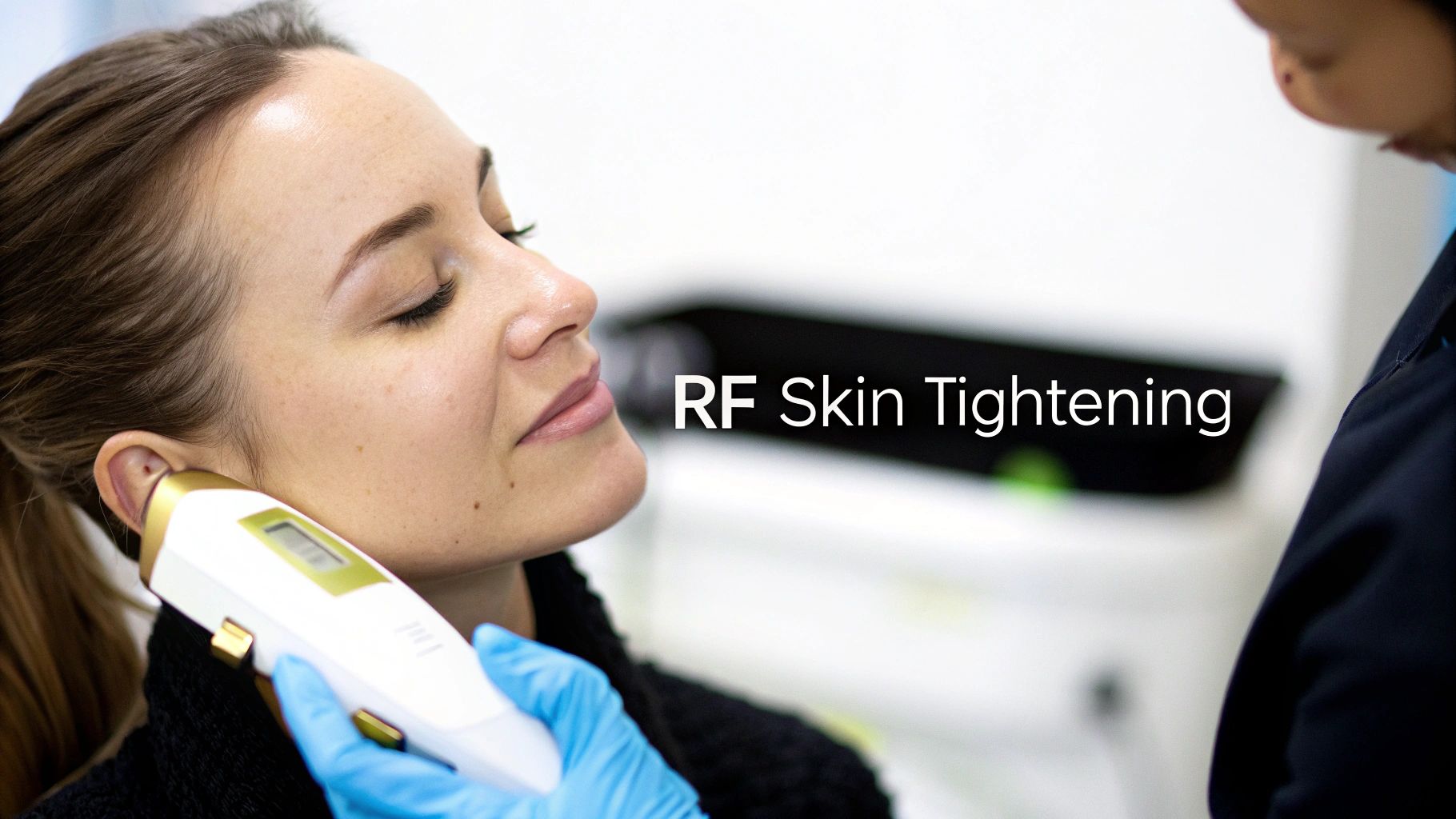
Let’s get right to it. RF skin tightening is a non-surgical treatment that uses radiofrequency energy to gently heat the deep layers of your skin. Think of it as a workout for your skin’s support structure—it wakes up the cells responsible for producing collagen, the protein that keeps everything firm and plump. The goal is to improve skin laxity and overall texture without a single needle or any real downtime.

So, what’s really happening during one of these treatments? At its core, this procedure is all about kickstarting your body's natural repair system. A specialized device sends controlled energy waves deep into the dermis, which is the thick, foundational layer of your skin. This creates a gentle, therapeutic warming effect.
Your body interprets this warmth as a signal to heal itself, setting off a two-part response. First, the existing collagen fibers immediately contract and tighten. Then, over the following weeks and months, your body ramps up the production of brand-new collagen and elastin. These two proteins are the absolute cornerstones of firm, smooth, and youthful-looking skin.
The real elegance of this technology is its precision. Unlike some lasers that focus on the skin's surface, RF energy bypasses the top layer (the epidermis) entirely, delivering heat directly to the underlying structural tissue. This targeted approach is a key reason it stands out among other non-invasive skin tightening options. Most clients find the procedure comfortable, and no anesthesia is needed.
At its core, RF skin tightening is a method of remodeling your skin from the inside out. It addresses the structural causes of sagging and wrinkles, rather than just treating the surface.
This approach delivers improvements that look gradual and completely natural. To give you a better idea of what to expect, here’s a quick breakdown of a typical RF treatment.
Essentially, the treatment provides both a subtle, instant lift and long-term improvements as your body continues to rebuild its collagen supply.
To really get what RF skin tightening is all about, you have to think about what's happening under the surface. Picture your skin's support system like a mattress. In your youth, the springs—your collagen and elastin fibers—are firm and bouncy, keeping everything smooth and taut. But with time, those springs start to wear out and lose their tension, which is when we see sagging and wrinkles appear.
RF skin tightening is like calling in a specialist to restore those springs. It uses focused energy waves that travel right through the top layer of your skin without affecting it. Instead, they deliver a controlled warmth deep down into the dermal layer, which is exactly where your collagen and elastin live.
This whole process is incredibly precise. The RF device essentially acts like a smart thermostat for your skin, carefully heating the underlying tissue to an ideal temperature—usually somewhere between 104 to 111 degrees Fahrenheit (40-44°C). This targeted heat is the trigger for your body's own powerful, natural repair response.
The real magic of radiofrequency energy unfolds in two distinct stages. The first thing that happens is an immediate tightening of your existing collagen fibers. The gentle heat causes these protein strands to contract and pull closer together, giving you a subtle, instant firming effect that you might notice as soon as you leave your appointment.
But the second phase is where the long-term, significant changes happen. This is a healing process called neocollagenesis. Your body perceives the controlled heat as a signal to repair itself and kicks its fibroblast cells—the tiny "collagen factories" in your skin—into high gear. Over the next several weeks and months, these cells get busy producing brand-new, high-quality collagen and elastin.
This one-two punch is what makes the results so effective and natural-looking. You get a little lift right away, followed by a gradual but substantial improvement in your skin's fundamental support structure.
Think of it like reinforcing the foundation of a house. Instead of just spackling over the cracks you see on the surface, RF technology goes deeper to rebuild the internal framework. Radiofrequency (RF) skin tightening treatments work by delivering controlled RF energy to heat the deeper layers of the skin, stimulating collagen production, which improves skin texture, elasticity, and reduces wrinkles. You can discover more insights about the global skin tightening market and see just how much it's growing.
This is also why your final results take a bit of time to show up. Your body needs a few months to go through that full, amazing rebuilding cycle.
The core principle of RF skin tightening is not to introduce foreign substances, but to awaken your skin’s own regenerative capabilities. It empowers your body to turn back the clock on a cellular level, restoring firmness and resilience from the inside out.
As this fresh collagen matrix forms, you'll start to see a real reduction in sagging skin and a softening of fine lines and wrinkles. The treatment is literally restoring the density and elasticity that your skin has lost over the years.
One of the best parts about this technology is how comfortable it is. Today’s RF devices are incredibly advanced and come with built-in cooling systems to protect the surface of your skin. This ensures the therapeutic heat is delivered only to the deeper layers where it’s needed.
Because of this, most people say the treatment feels like a pleasant, deep warmth. Many even compare it to a hot stone massage. That comfort level, combined with the fact there's no downtime, makes it an incredibly popular choice for people who want real results without the hassle and recovery of surgery. The treatment simply coaxes your skin into repairing itself, using its own brilliant, natural systems.
When you start looking into RF skin tightening, you'll quickly realize it's not a one-size-fits-all treatment. The real difference between devices comes down to how they deliver that skin-firming energy.
Knowing the basics helps you have a much better conversation with your practitioner about what will actually work for your skin and your goals. The three main players in the game are Monopolar, Bipolar, and Multipolar RF. Each has its own way of working, which affects how deep the heat goes. This is key, because what’s great for tightening skin on your stomach isn't necessarily right for the delicate skin around your eyes.
Think of Monopolar RF as the original powerhouse. It works with a single electrode on the handpiece and a grounding pad placed somewhere else on your body, like your back. This setup creates a complete circuit, allowing the radiofrequency energy to travel deep into the skin—all the way down to the subcutaneous fat layer.
Because it reaches so deep, Monopolar RF is fantastic for tackling larger areas with more significant sagging. It's often the go-to for body contouring, tightening loose skin on the abdomen, and really defining a jawline. The effect is a deep, structural remodeling that gives your skin its support back from the inside out.
Bipolar RF is a bit different. These devices have two electrodes built right into the treatment head. The energy simply flows in a contained loop between these two points, keeping the heat much closer to the surface.
This controlled approach gives the practitioner incredible precision. It’s the perfect choice for delicate spots that need a lighter touch, like the fine skin around the eyes or mouth.
Bipolar radiofrequency technology, which allows precise control of current flow via symmetric electrodes, holds the largest market share relative to other RF types, given its balanced efficacy and safety profile for skin tightening and acne treatments. Read the full research on RF technology market trends.
Multipolar RF is the newer kid on the block, combining several electrodes in one handpiece. This creates a dense web of energy that heats multiple layers of skin at once without going too deep. It strikes a great balance between comfort and effectiveness, making it a really versatile option for both the face and body. Advanced systems like Exilis often use these sophisticated technologies for customized treatments. You can learn more about how Exilis treatments work on our dedicated service page.
To help you visualize how these technologies differ, here's a quick breakdown.
This table compares Monopolar, Bipolar, and Multipolar RF, highlighting how they work and what they're best used for.
Ultimately, the right technology depends entirely on your unique anatomy and what you're hoping to achieve.
This infographic simplifies the core principle behind all RF treatments: stimulating your body's natural healing process.
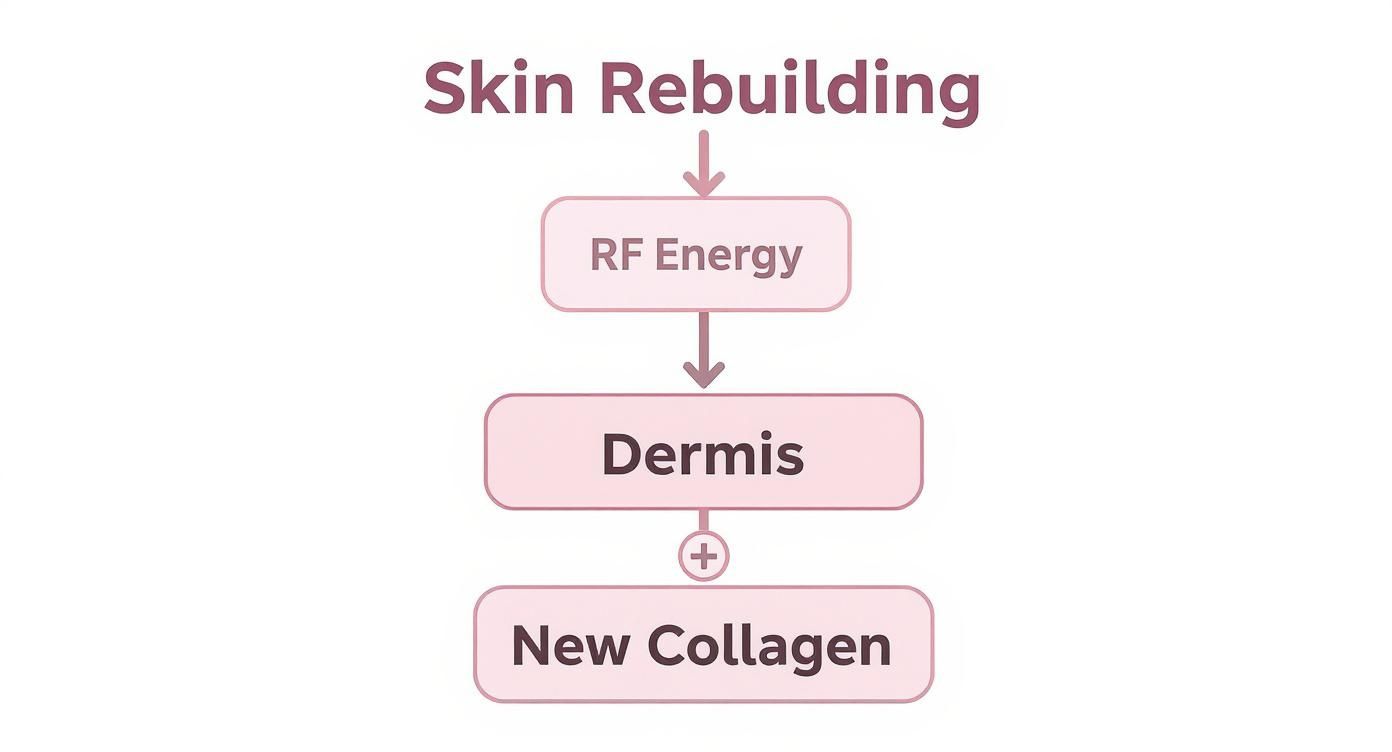
As you can see, the RF energy provides a gentle "wake-up call" to the dermis. This prompts your body to create fresh, new collagen—the very protein that keeps your skin firm and youthful.
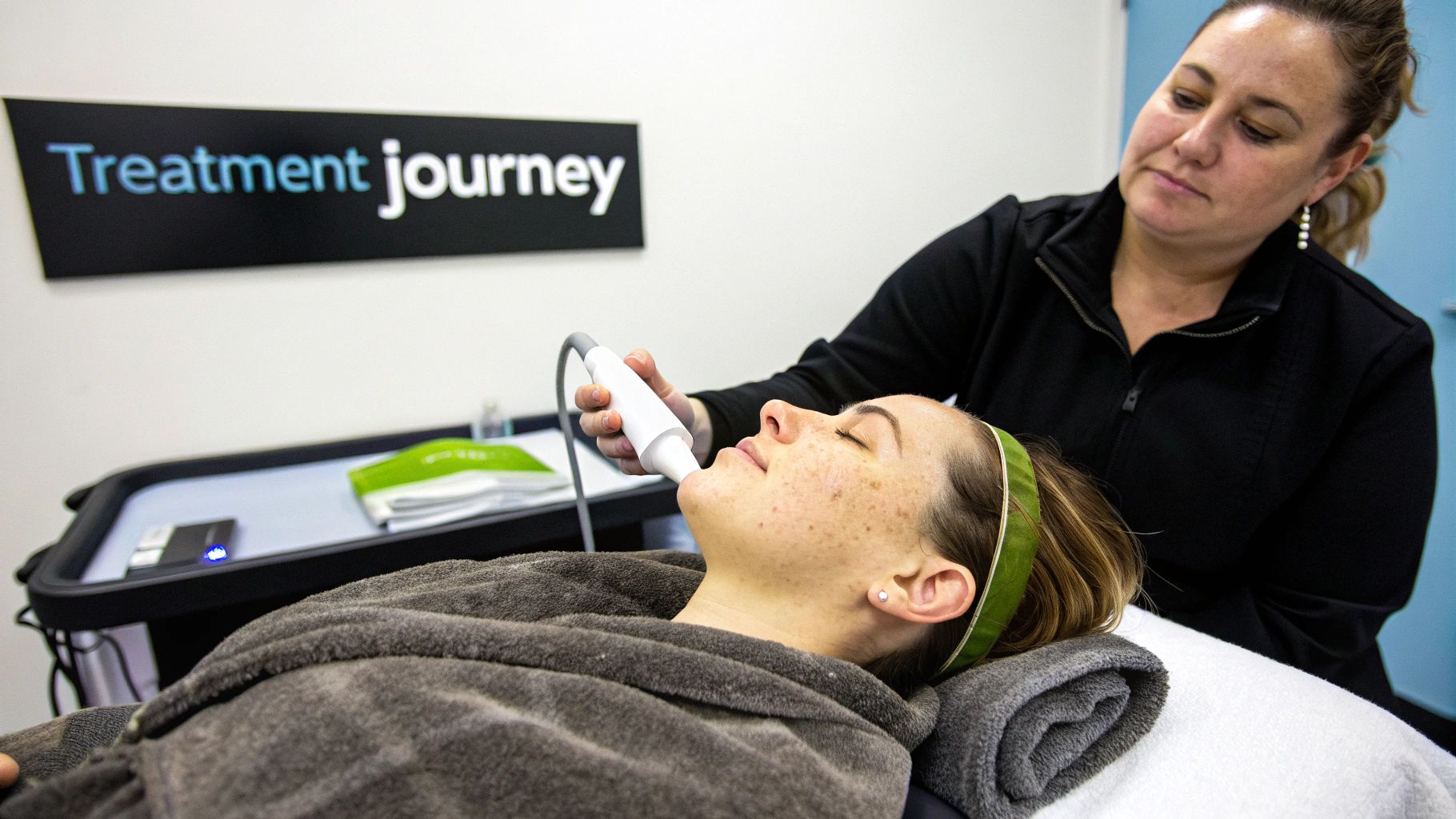
Knowing the science behind RF skin tightening is great, but what does the experience actually feel like? It’s important to have a clear picture of the entire process, from the first conversation to seeing your final results. The journey is designed to be comfortable and straightforward, so you feel confident every step of the way.
It all starts with an in-depth consultation. Here, a specialist will take a close look at your skin, listen to what you want to achieve, and map out a plan. This is your chance to ask anything and everything to make sure this treatment is the right fit for you.
When you come in for your appointment, the process itself is quite relaxing. It breaks down into a few simple stages:
Most people find this sensation surprisingly pleasant, often describing it as feeling like a hot stone massage. The whole thing is over pretty quickly, too—sessions typically last between 30 to 60 minutes, depending on how large of an area is being treated. There's no need for any numbing cream, so you can just lie back and relax.
Right after your session, your skin might look a little flushed or rosy, but this mild redness usually disappears within a couple of hours. The best part? There is zero downtime, so you can head right back to work or whatever else you have planned for the day.
While you might notice a subtle tightening effect almost immediately, the real magic happens over time. The most significant improvements will gradually emerge over the next 2 to 6 months as your body gets to work building fresh, new collagen.
For the best, most durable outcome, a series of treatments is usually the way to go. The total cost can depend on several factors, which you can learn more about in our detailed guide on the factors influencing Thermage treatment costs.
The goal of a treatment series is to progressively build upon the results of the previous session, creating a stronger, more resilient collagen foundation over time for a natural and lasting improvement.
Deciding if RF skin tightening is the right move for you is the most important first step. So, who is this treatment really for? Generally, the best candidates are people with mild to moderate skin laxity—those who want a real, visible improvement but aren't ready or willing to go the surgical route.
If you’re just starting to notice the first signs of gravity, like your jawline getting a little soft, some looseness under your chin, or fine lines cropping up, this treatment can be a game-changer. It's designed to hit that sweet spot between doing nothing and doing something drastic.
One of the most impressive things about this technology is how well it works on virtually every skin tone. The radiofrequency energy goes deep, targeting the collagen-rich dermal layers while leaving the surface—where your pigment-producing cells live—alone. This means the risk of hyperpigmentation is incredibly low, making it a safe and effective choice for people with darker skin who often have to be cautious with laser treatments.
This treatment truly shines for a particular group. Market insights show that the core demographic is typically between 25 and 65 years old, a group that's more invested than ever in maintaining a youthful appearance. You can dive deeper into the skin tightening market demographics on FutureMarketInsights.com for more on this trend.
You're probably a great fit for RF skin tightening if you:
It's just as crucial to know when this isn't the right treatment. RF skin tightening is not a magic bullet for significant sagging. If you have a lot of loose skin, a surgical lift is likely the only way to get the dramatic results you’re looking for.
It’s all about realistic expectations. This procedure delivers a definite firming and lifting effect, but it is not a facelift.
There are also a few health-related red flags, or contraindications, that make the treatment unsafe. You should steer clear of this procedure if you:
Ultimately, the best way to know for sure is to sit down with a qualified provider. A thorough consultation will confirm if you’re a good candidate and set you up for a safe and successful treatment.
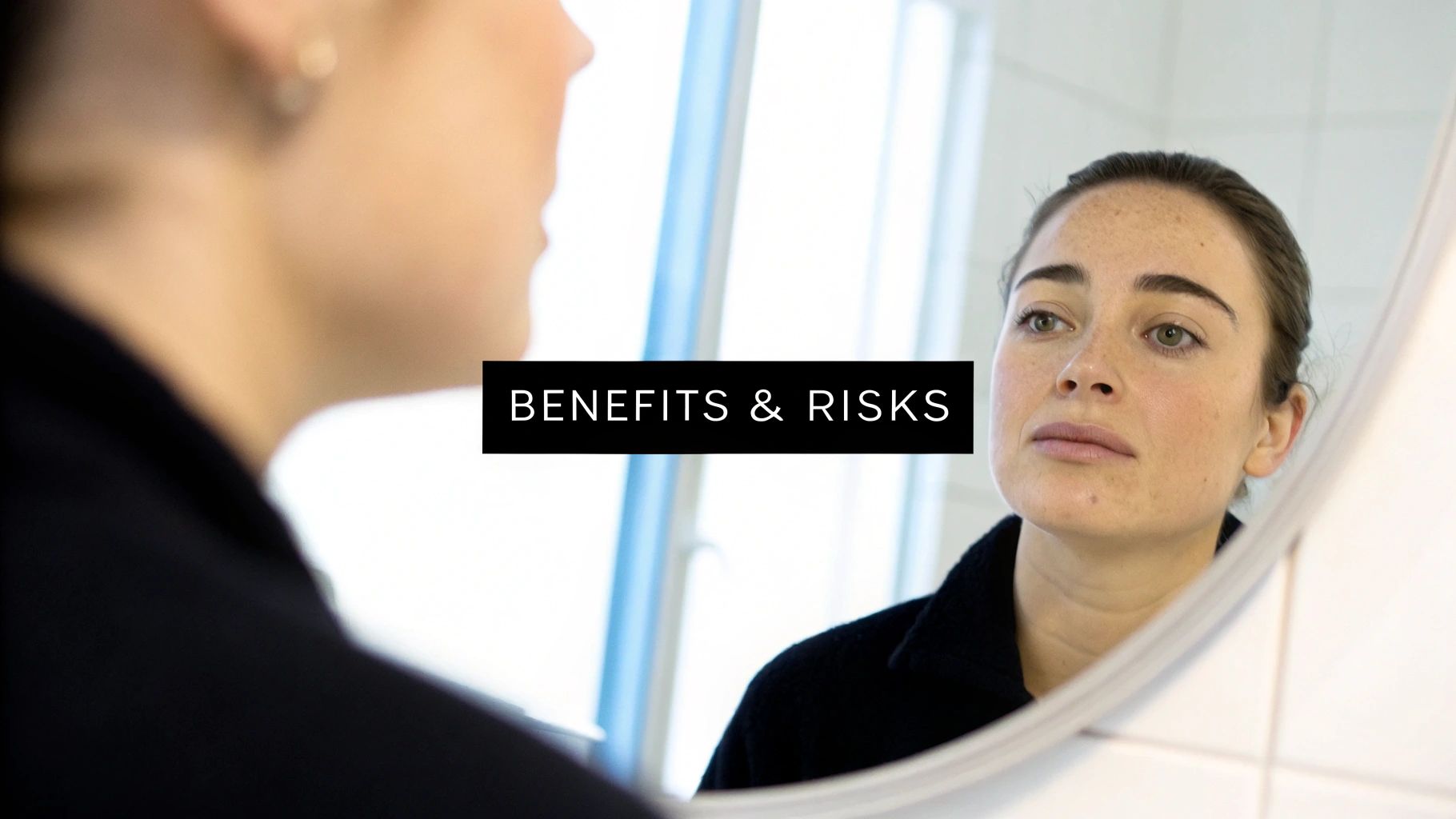
Like any cosmetic treatment, it’s smart to walk in with a clear picture of both the upsides and the potential downsides. When you're looking into what RF skin tightening is, the benefits are what usually catch your eye, and for good reason. The biggest draw for most people is how the results look so natural.
This isn't an overnight, drastic change. The magic happens gradually as your own body rebuilds its collagen, leading to a subtle but noticeable improvement in firmness and texture. Another huge plus is the convenience. There's virtually no downtime, meaning you can head right back to your daily life after a session—no hiding out for a week of recovery.
It’s this powerful combination of genuine, natural-looking results and walk-in, walk-out ease that makes it such a popular choice for people with busy schedules.
While RF skin tightening has a fantastic safety record, it’s still important to know about the potential side effects. The good news? The vast majority are minor and don't last long.
Most side effects are really just signs the treatment is working—like a bit of warmth or redness—and they typically fade within a few hours. Serious issues are incredibly rare, especially when you're in the hands of a skilled professional.
It’s completely normal to see some mild redness and feel a little warmth in the treated area right after your appointment. Think of it as a sign that the collagen-rebuilding process has officially kicked off.
In very rare cases, issues like burns or blisters can occur, but these are almost always the result of an inexperienced technician or outdated technology. This brings us to the most critical piece of advice for a safe and successful treatment: always choose a board-certified provider with extensive experience. Their expertise is your best insurance for getting the results you want while keeping your skin protected.
Alright, let's tackle some of the common questions that pop up when people are thinking about RF skin tightening. Getting straight answers is the best way to feel confident and ready for your treatment.
This is probably the biggest question on everyone's mind. The short answer? The results are impressive and long-lasting, but not permanent—after all, we can't stop the clock on aging entirely. The new, high-quality collagen your body builds can keep your skin looking firm and lifted for up to two years or even longer.
Of course, this can vary a bit based on your age, how you live, and your skin's unique starting point. To keep that collagen factory humming and maintain your great results, most experts suggest a quick "touch-up" session every 6 to 12 months.
Think of these maintenance treatments as a tune-up for your skin. They keep the amazing structural improvements going, so you can enjoy consistent, beautiful results for years to come.
I have great news for you on this one: the overwhelming majority of people find the treatment quite comfortable. The most common description is a deep, warming sensation, almost like a hot stone massage. It's generally very relaxing.
Today's RF devices are built with comfort in mind. Many have built-in cooling systems that keep the surface of your skin protected while the therapeutic heat works its magic deeper down. This means no anesthesia is needed, and that warm feeling fades almost as soon as the treatment is over.
There’s no magic number here; it really depends on what your skin needs and the results you're hoping to see. For most people, a series of 3 to 6 treatments is the sweet spot for achieving the best possible outcome.
We usually schedule these sessions about 2 to 4 weeks apart. This isn't random—it gives your body the perfect amount of time to kickstart its natural collagen and elastin production cycle between appointments. During your consultation, we'll map out a plan that’s tailored specifically for you and your goals.
At Cape Cod Plastic Surgery, Dr. Fater and our expert team are here to help you achieve your goals with treatments that are safe, effective, and tailored to you. If you're curious to learn more about how RF skin tightening can refresh your look, let's talk. You can schedule your personalized consultation today.

December 16, 2025
Want to tackle coolsculpting chin fat? This guide explains the procedure, pricing, downtime, and expected results to help you decide on a sharper jawline.
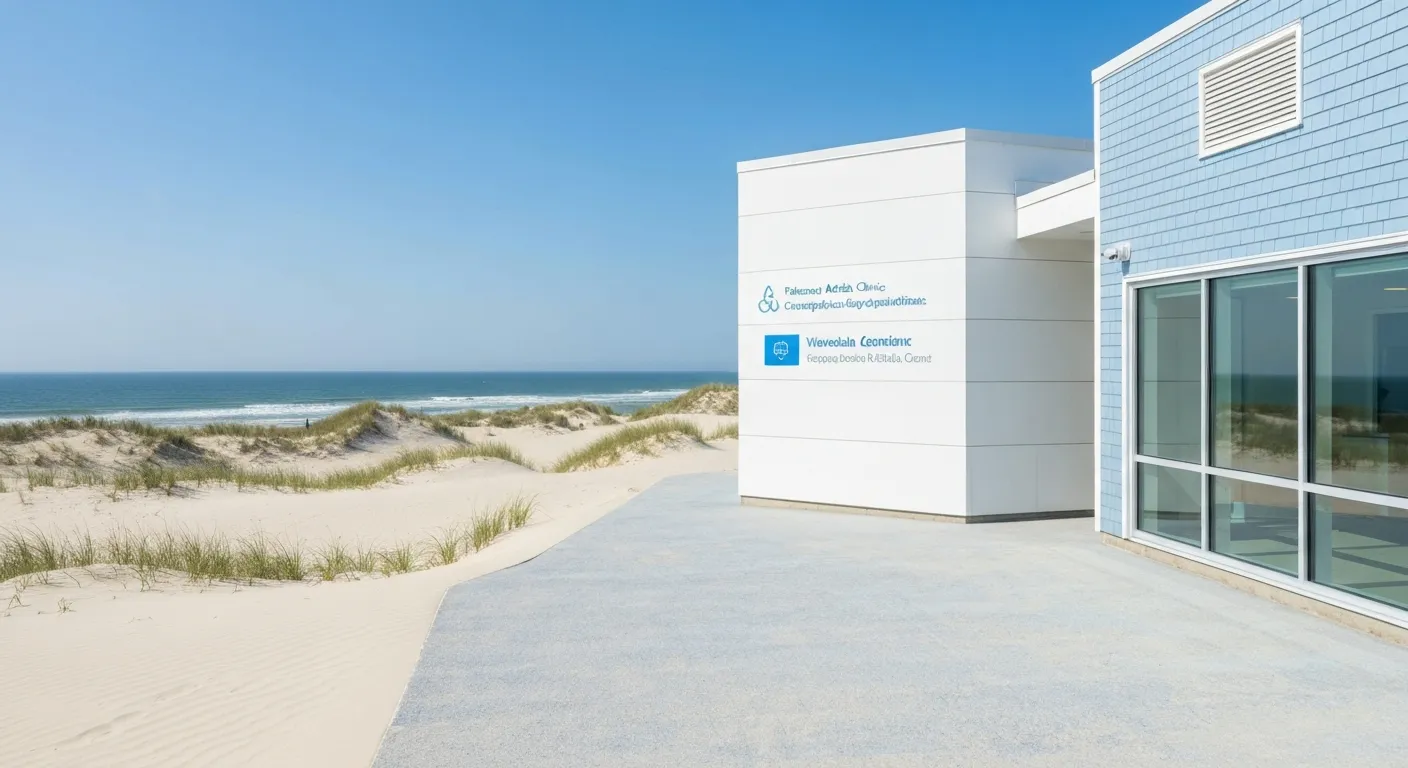
December 16, 2025
Ensuring Patient Safety Through Rigorous Accreditation on Cape Cod
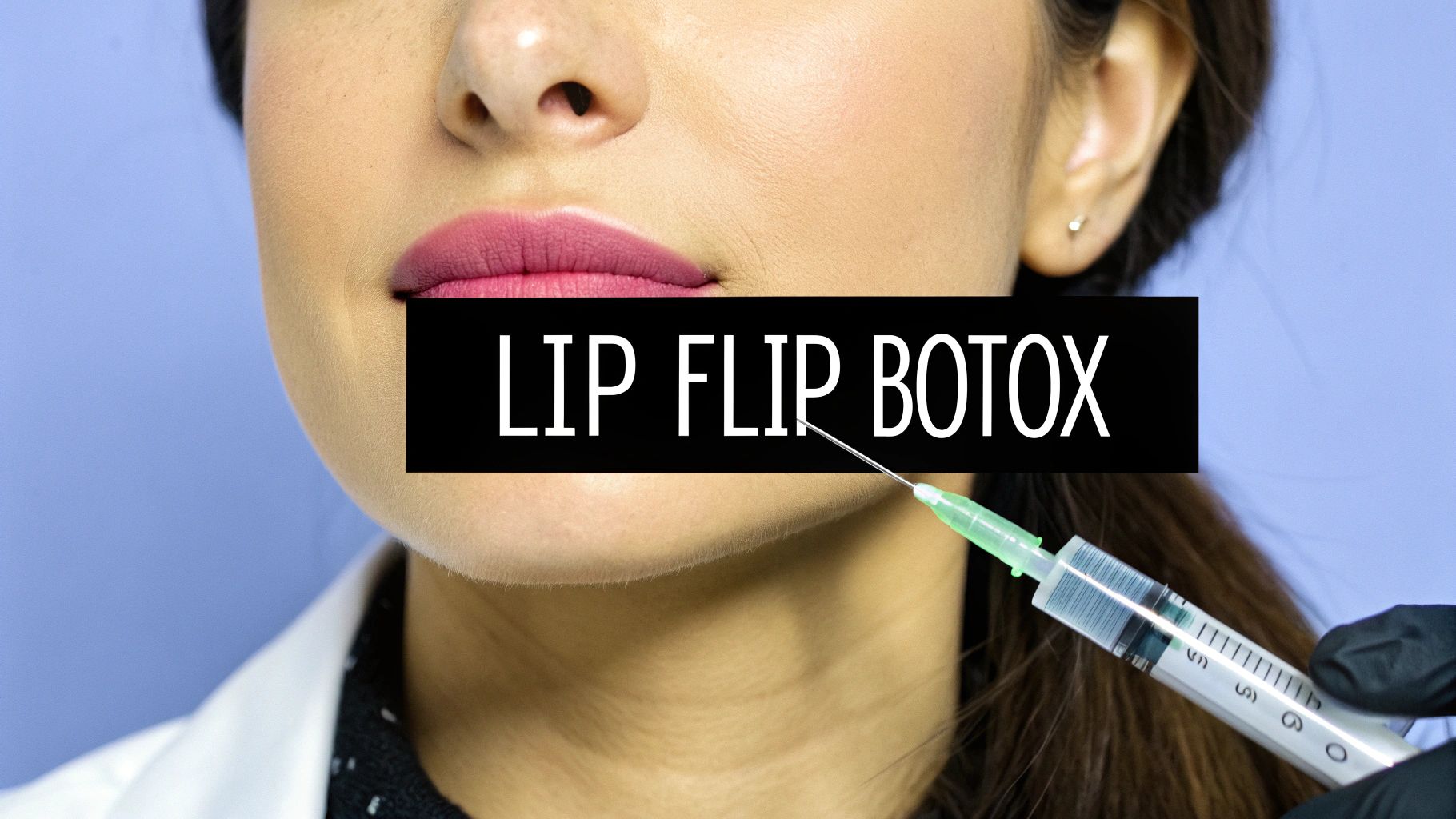
December 15, 2025
Considering a subtle enhancement? Learn what is lip flip botox, how it differs from fillers, the costs involved, and what the procedure is really like.